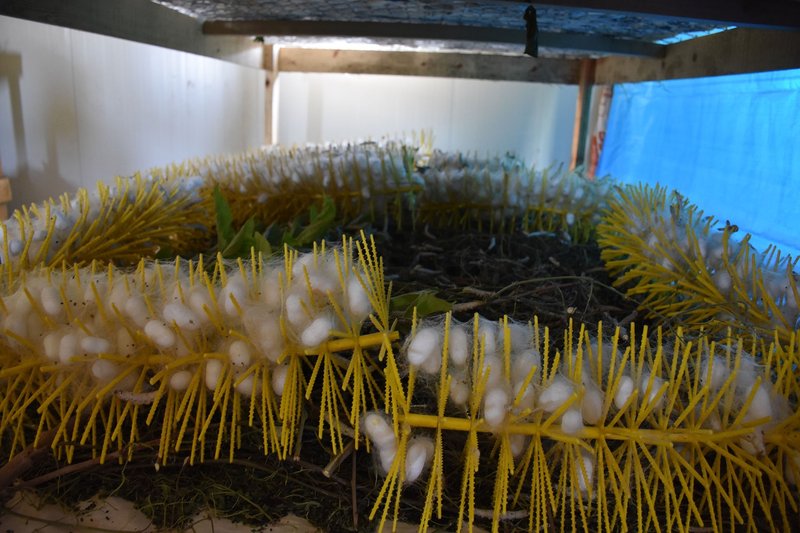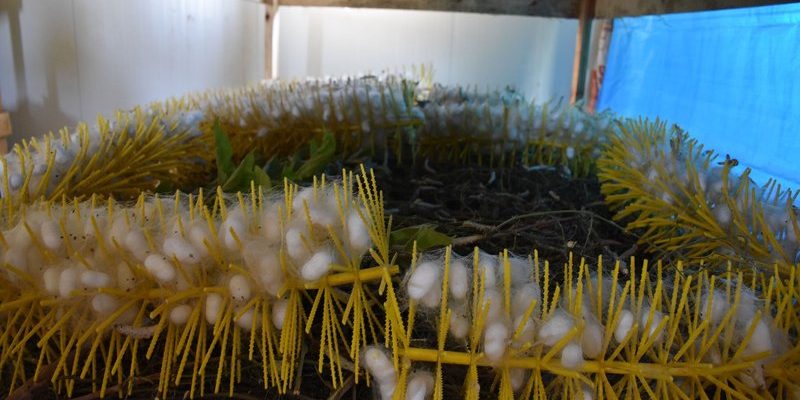
Let me explain a bit about what you’ll need to get started. A *mini silkworm farm* doesn’t require a massive investment or space. You can set it up with standard materials you may already have. Think of it as creating a cozy home for these creatures while getting closer to nature. Whether you want to create a fun project for the kids or dive into a unique hobby, raising silkworms can easily fit into your life.
What Are Silkworms?
Silkworms, or *Bombyx mori*, are the caterpillar stage of the silk moth. They’ve been domesticated for thousands of years primarily for silk production. As they feed on mulberry leaves, they grow quickly, shedding their skins multiple times. This is where the real magic happens—they spin cocoons that can be harvested for silk fibers!
Raising silkworms is more than just a fun project; it’s a chance to observe a remarkable life cycle. You’ll watch as tiny eggs hatch into larvae, grow into robust caterpillars, and then transform into delicate moths. Each stage is an opportunity to learn about nature and the environment around us.
You might be wondering why silkworms are such a staple in various cultures. Besides their fascinating life cycle, silk has been prized for centuries for its beauty and strength. From luxurious clothing to art pieces, silk has wrapped itself around history in many lovely ways.
Setting Up Your Mini Farm
Getting started is easier than you think! First, you’ll need a suitable space in your backyard or even indoors. A small box or container will work just fine to house your silkworms. Make sure it has good ventilation; silkworms need fresh air to thrive. A plastic bin with a mesh top is an excellent option.
You’ll also need to gather materials for feeding your silkworms. They primarily munch on fresh *mulberry leaves*. If you don’t have access to these, don’t worry! You can often find them at local markets or even grow your own if space allows. Having a steady supply of food is crucial, as they eat a lot during their larval stage.
Next up is temperature control. Silkworms prefer a warm environment—ideally around 75–85°F (24–29°C). If you live in a cooler climate, consider placing them in a sunny spot or using a heat mat to keep them cozy. Remember, consistency is key!
Feeding Your Silkworms
Feeding your silkworms is one of the most rewarding parts of this mini farming adventure. As soon as they hatch, they’ll be voracious eaters! You can easily spot them munching away, and it’s a sight to behold. Here’s how to ensure they’re well-fed:
- Freshness: Always offer fresh mulberry leaves. Wilted or old leaves won’t do; your silkworms deserve the best!
- Quantity: As they grow, your silkworms will need more food. Be prepared to provide a substantial amount, especially during their peak feeding stage.
- Cleanliness: Make sure to clean out the container regularly. Old leaves can attract pests or create mold, which is harmful to your silkworms.
You might want to check on them daily. If the leaves are disappearing rapidly, it’s a sign that your silkworms are happy and healthy. And don’t worry if they seem a bit sluggish; they’ll perk up once they get those leaves!
The Life Cycle of Silkworms
Understanding the life cycle of silkworms is a beautiful journey. Here’s a brief overview of what you can expect:
1. Egg Stage: It all starts with tiny eggs, which can be very small—almost like little specks. They typically hatch in about 10 days, depending on temperature.
2. Larval Stage: Once they hatch, silkworms enter the larval stage. This is where they grow and develop. They will shed their skin several times (a process called molting) as they outgrow it. You’ll notice them growing rapidly during this phase.
3. Pupal Stage: After about a month of eating and growing, your silkworms will spin themselves into cocoons. This stage is crucial; they will transform into moths during this time, typically lasting about two weeks.
4. Moth Stage: Finally, the adult moths emerge from their cocoons, ready to mate and lay eggs. In a controlled setting, you can manage this process to either harvest silk or simply continue the cycle.
Each stage has its own fascinating features, making your mini farm an ongoing learning experience.
Harvesting Silk: The Reward
Once your silkworms have spun their cocoons, and you’re ready to harvest, it’s a thrilling moment! Here’s how to do it right:
1. Timing: Wait for about 3-4 days after the cocoons are spun. This allows the silk to firm up, making it easier to harvest.
2. Coating: Keep in mind that you can treat the cocoons in hot water to kill the pupae and allow for easier unraveling of the silk threads.
3. Unraveling: Take care while unraveling the silk. It’s a delicate process, but with patience, you’ll be left with beautiful silk strands.
4. Store Properly: Once harvested, store the silk in a cool, dry place to maintain its quality.
Harvesting silk connects you to centuries of tradition. It’s quite rewarding to produce something so cherished and beautiful right from your backyard.
Common Challenges and Troubleshooting
Like any hobby, raising silkworms can come with its challenges. Here are some common issues you might face, along with tips on how to handle them:
1. Temperature Fluctuations: If the temperature drops or spikes too much, your silkworms may become sluggish or stop eating. Use a thermometer to monitor the environment closely.
2. Mold on Leaves: If you notice mold forming on the leaves, it’s a sign you need to clean your container better. Regular cleaning helps prevent this issue.
3. Pests: Watch for pests like mites or ants. If you spot them, act quickly using natural pest deterrents, or simply isolate affected areas of your farm.
4. Inadequate Food Supply: Running out of mulberry leaves can lead to stressed silkworms. Always keep an extra stash on hand or regularly check local markets for fresh supplies.
Dealing with these challenges can make you a better mini farmer. Plus, with each hurdle you overcome, you grow more connected to your silkworms and the fascinating world of silk production.
Wrapping Up Your Silkworm Adventure
Building a mini silkworm farm is an exciting project that can spark interest in nature, biology, and even textile arts. Whether you’re fascinated by the life cycle of silkworms or just curious about silk production, this journey will surely bring joy and learning.
Honestly, there’s nothing quite like observing these tiny creatures thrive under your care. The sense of accomplishment you feel when you harvest your first silk threads? That’s pure magic. So, grab a container, gather those mulberry leaves, and dive into the world of silkworm farming. Happy farming, and enjoy the process of creating something beautiful!

